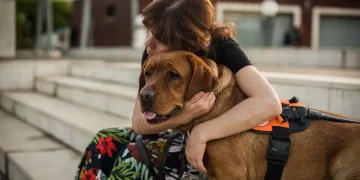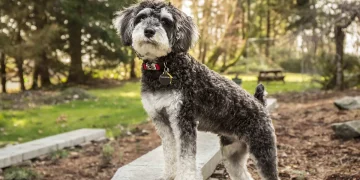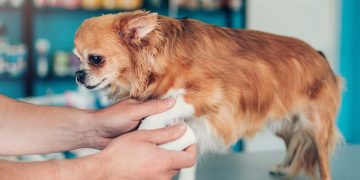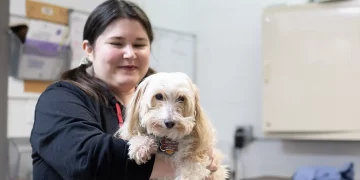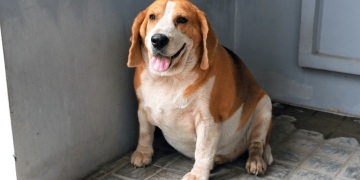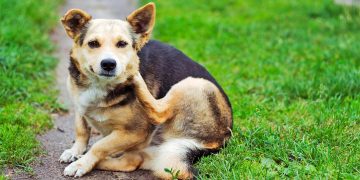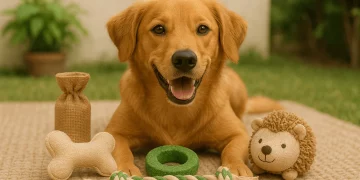Grooming is more than just hygiene—it’s a lifelong routine that directly affects a dog’s comfort, health, and trust in humans. Yet for many puppy owners, the first grooming sessions are anything but smooth. Teeth come out. Paws flail. Clipping nails or brushing fur turns into a wrestling match. While it’s easy to label a biting puppy as “naughty,” the behavior is often rooted in fear, confusion, or overstimulation. Understanding why puppies bite during grooming—and how to train them step by step to tolerate, even enjoy, the process—is the key to a lifetime of stress-free care.
Why Puppies Bite During Grooming: Instinct, Fear, and Play
At around 8 to 16 weeks old, puppies experience a developmental phase known as the sensitive period. During this time, their brains are rapidly forming associations with sights, sounds, and touch. Anything unfamiliar—including buzzing clippers, brushing near their ears, or nail trimming—can be perceived as a threat.
Biting during grooming may be:
- Defensive: The puppy feels cornered or restrained, triggering a survival response.
- Play-driven: Puppies explore the world with their mouths, and grooming can resemble play wrestling.
- Discomfort-based: Mats, knots, or rough handling can cause pain or confusion.
- Sensory overload: Too much stimulation—touch, tools, or movement—can cause a bitey reaction.
Punishing biting without addressing its root cause can worsen the problem. Instead, thoughtful, phased training teaches your pup to feel safe and in control.
Start Early: Prevention Through Positive Exposure
The best time to begin grooming training is before it’s urgently needed. Even if your puppy’s coat doesn’t require frequent trimming, early handling sets the stage for future cooperation.
Begin by gently introducing grooming tools one by one: a soft brush, a damp cloth, or even a nail clipper held in your hand without using it. Let your puppy sniff and explore. Pair each new tool with high-value treats and soothing praise.
Practice gentle handling of “sensitive zones” like paws, ears, and the tail. Use calm voices, slow movements, and end the session before your puppy gets squirmy. The goal isn’t to fully groom but to build trust and comfort through touch.
Phase One: Calm Before Contact
Before you even reach for the brush or scissors, teach your puppy to relax in your presence. This creates a mental foundation of safety.
- Mat training: Teach your puppy to lie calmly on a towel or mat. This becomes their “grooming station.”
- Touch without tools: Stroke your puppy’s head, back, and legs gently. Reward calm behavior with treats.
- Desensitize restraint: Briefly touch or gently hold a paw, ear, or tail. Release immediately and praise. Gradually increase the duration.
- Read body language: If your puppy stiffens, turns away, or yawns excessively, take a break. These are early stress signals.
Doing this for 3–5 minutes a day builds tolerance without triggering defense.
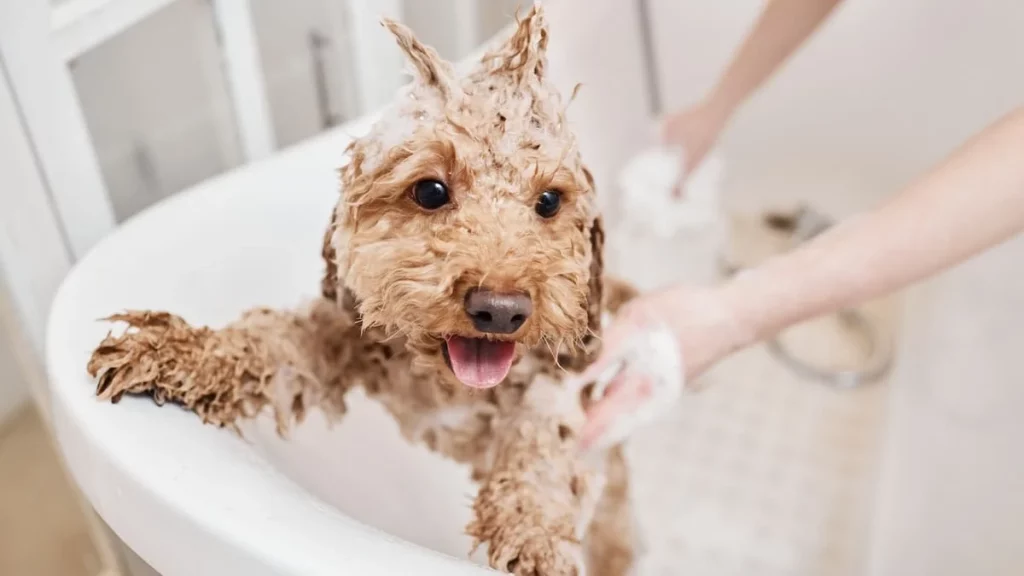
Phase Two: Introducing Tools and Contact
Once your puppy tolerates calm touch, start pairing grooming tools with the same gentle approach.
- Brush introduction: Touch the brush to your puppy’s shoulder for just a second, then reward. Don’t stroke yet. Repeat this until the brush is associated with good things.
- Start with low-sensitivity areas: Brush along the back and flanks before attempting legs, belly, or face.
- Use counter-conditioning: Give a steady stream of treats while brushing for 3–5 seconds. Then stop both brushing and treat. Repeat. This teaches your pup that calm during brushing = delicious rewards.
- Short sessions, big praise: Keep grooming sessions under five minutes initially. End on a positive note.
Avoid restraining your puppy forcibly or rushing through. The goal is consent-based handling, not endurance.
Phase Three: Training Through Bite Moments
Even with preparation, puppies will sometimes nip during grooming. Instead of scolding, treat these as teaching opportunities.
- Yelp or pause: If your puppy bites, let out a sharp but non-angry “ow!” and stop grooming. This mimics how littermates teach bite inhibition.
- Wait for calm: Don’t resume until your puppy is still. Then continue slowly.
- Redirect biting: Offer a chew toy or treat-stuffed Kong before brushing to satisfy the need to bite in an acceptable way.
- Mark and reward calm: Use a clicker or a verbal marker like “yes” the moment your puppy tolerates brushing or touch without resistance.
Repetition is key. Puppies learn best through consistent feedback.
Specific Grooming Scenarios and Bite Prevention
- Nail trimming: Start with paw desensitization. Gently touch and hold paws during calm times. Use a file or grinder before trying clippers. Trim just one nail a day if needed. Always reward after.
- Face grooming: Use a damp cloth for gentle wipes. Keep your hand behind the head, not over the eyes. Praise for stillness.
- Ear cleaning: Introduce the bottle or wipe first. Use a calming voice and reward heavily after each ear.
Using treats the puppy licks rather than chews (like peanut butter on a spoon) can help keep their mouth occupied during grooming.
Building a Long-Term Grooming Mindset
Puppies that learn grooming isn’t scary grow into adult dogs that accept nail trims, baths, and brushing with minimal fuss. That requires not just bite prevention but trust-building.
- Groom after walks or play: A tired puppy is a calm puppy.
- Never use grooming as punishment: If your dog dreads grooming, you’ve lost their cooperation.
- Create rituals: Same mat, same voice, same sequence. Routine creates confidence.
- Use cooperative care training: Teach your puppy to offer paws, sit still, or rest their head in your hand. These behaviors give them choice and control.
Some trainers recommend teaching a “grooming cue” like “spa time” so the puppy learns what to expect. Dogs thrive with predictability.
When to Get Help
If your puppy shows intense fear, thrashing, or aggressive biting despite calm training, consult a force-free behaviorist or veterinary trainer. There may be deeper sensory sensitivities or trauma that need individualized support.
Similarly, if your puppy resists touch in specific areas, rule out medical issues like skin irritation, joint pain, or infections.
Consistency Builds Confidence
Puppies who bite during grooming are not bad—they’re overwhelmed. With a gentle, phased approach, you can teach even the squirmiest, mouthiest puppy to cooperate willingly. Training calm responses during grooming isn’t about control—it’s about creating a language of trust between you and your dog. When your puppy learns that grooming is safe, predictable, and maybe even enjoyable, the biting fades naturally. What you’re building isn’t just a clean dog—it’s a confident one.




